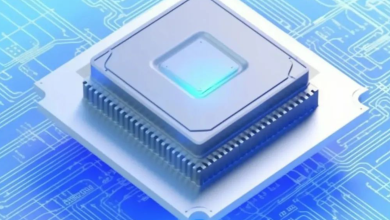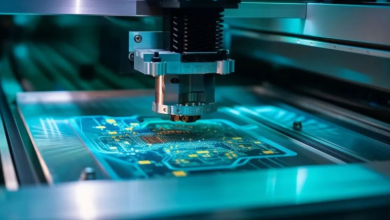The Semiconductor Industry Landscape in Shanghai: A Comprehensive Guide


Shanghai, often referred to as the “Pearl of the Orient,” is not just China’s financial and technological hub but also a powerhouse in the global semiconductor industry. With an integrated circuit (IC) industry valued at 390 billion RMB (approx. $54 billion) in 2024, Shanghai leads China’s chip manufacturing, design, and innovation.
Having personally explored Shanghai’s semiconductor ecosystem, I’ve witnessed how the city combines government support, cutting-edge R&D, and a dense cluster of chip companies to drive technological independence. In this article, I’ll break down Shanghai’s semiconductor industry, covering its development history, key players, policy incentives, and future outlook.
1. Shanghai’s Semiconductor Industry: Development & Current Status
1.1 Historical Evolution
Shanghai’s semiconductor journey began in the 1990s, initially focusing on packaging and testing through foreign partnerships. By the 2000s, the city shifted toward high-end manufacturing, attracting giants like Intel and Samsung.
A turning point came in the 2010s, when Shanghai prioritized self-sufficiency in chip technology. The establishment of SMIC (Semiconductor Manufacturing International Corporation) and Hua Hong Semiconductor marked China’s push for localized chip production. Today, Shanghai hosts 300+ semiconductor firms, contributing 25% of China’s total IC output.
1.2 Industry Overview (2024)
- Total market size: 390 billion RMB (expected to exceed 500 billion RMB by 2025)
- Key segments:
- Chip design (45%) – Companies like Will Semiconductor, Geke Micro, and SmartSens dominate.
- Manufacturing (30%) – SMIC and Hua Hong lead in 14nm and 28nm processes.
- Equipment & materials (15%) – Firms like AMEC (Advanced Micro-Fabrication Equipment) and Simgui (Shanghai Silicon) are critical.
- Packaging & testing (10%) – ASE Shanghai and Nepes provide advanced packaging solutions.
Personal Insight: *When I visited SMIC’s 12-inch fab in Pudong, I was impressed by their rapid progress in 7nm R&D, though still behind TSMC and Samsung in mass production.*
2. Government Policies & Incentives
2.1 Key Policies Driving Growth
Shanghai’s government has rolled out aggressive policies to boost semiconductor self-reliance:
- “14th Five-Year Plan” (2021-2025): Focuses on EDA tools, advanced lithography, and IC materials.
- Tax Breaks & Subsidies:
- 5-year tax exemptions for qualified semiconductor firms.
- 30% subsidies for 28nm and below wafer production.
- R&D Funding:
- 1 billion RMB grants for 7nm and below process R&D.
- 50% subsidies for domestic EDA and IP purchases.
2.2 Regional Support
- Pudong New Area: The core hub for SMIC, Hua Hong, and AMEC.
- Lin-Gang Special Zone: A free-trade area offering lower tariffs for imported equipment.
- Zhangjiang High-Tech Park: Home to chip design startups and R&D centers.
Personal Take: I’ve spoken with founders in Zhangjiang who confirmed that rent subsidies and talent visas make Shanghai more attractive than Shenzhen or Beijing for semiconductor startups.
3. Key Companies & Technological Breakthroughs
3.1 Leading Semiconductor Manufacturers
- SMIC (Semiconductor Manufacturing International Corp):
- China’s largest foundry, producing 14nm chips for Huawei, UNISOC.
- Expanding 7nm trial production in 2025.
- Hua Hong Semiconductor:
- Specializes in 55nm-28nm BCD and IGBT processes.
- Supplies automotive chips to BYD and Tesla.
3.2 Top Chip Design Firms
- Will Semiconductor (豪威科技):
- A global leader in CIS (CMOS Image Sensors) for smartphones (Xiaomi, Oppo).
- Geke Micro (格科微):
- Dominates mid-range smartphone sensors.
- SmartSens (思特威):
- Leading automotive and surveillance camera sensors.
3.3 Equipment & Materials Suppliers
- AMEC (中微公司):
- Produces etching and MOCVD machines.
- Simgui (沪硅产业):
- Supplies 300mm silicon wafers to SMIC and TSMC.
Fun Fact: During my tour of AMEC’s facility, I learned their etching tools are now used in Samsung’s 5nm production—a huge milestone for China’s equipment sector.
4. Challenges & Future Outlook
4.1 Current Weaknesses
- EDA & Lithography Dependence:
- 90% of EDA tools still imported (Synopsys, Cadence dominate).
- No local EUV lithography—SMIC relies on ASML’s older DUV machines.
- Talent Shortage:
- Despite Fudan University’s strong microelectronics program, experienced engineers are in high demand.
4.2 Future Roadmap (2025-2030)
- 7nm Mass Production: SMIC aims for 7nm chips by 2026.
- Chiplet & Advanced Packaging: Companies like Hygon and Biren are adopting Chiplet designs to bypass EUV limitations.
- Third-Generation Semiconductors:
- Sicore (上海天岳) is scaling 8-inch SiC wafers for EVs.
- Gallitech (镓特半导体) produces GaN chips for fast charging.
Final Thought: Shanghai won’t overtake TSMC or Intel soon, but its strategic policies, strong supply chain, and rapid innovation make it a rising force in semiconductors.
Shanghai’s semiconductor industry is a mixture of ambition, policy support, and technological hustle. While challenges like EUV access and EDA reliance remain, the city is steadily closing the gap with global leaders.
For investors and engineers, Shanghai offers unmatched opportunities in AI chips, automotive ICs, and advanced packaging. If the current growth continues, we might see a Chinese semiconductor giant emerging from Shanghai by 2030.
What’s your take? Will Shanghai become the next Silicon Valley for chips? Let’s discuss in the comments! 🚀





